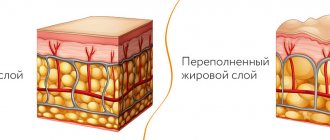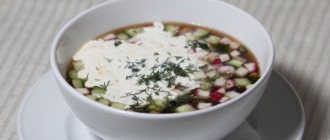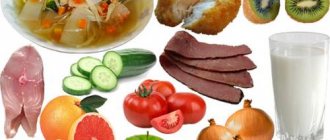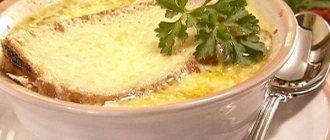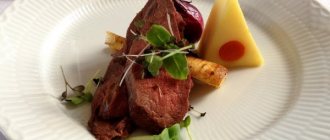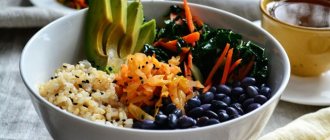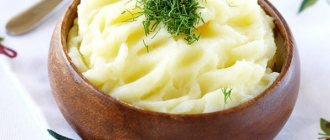Radiologist CT IYM Khimki
Vinogradov
Dmitry Alekseevich
5 years experience
Gastroenterologist
Make an appointment
Gastroduodenitis is an inflammation of the gastric mucosa that spreads to the mucous membranes of the duodenum. In this case, the duodenum suffers from a secondary process at the moment when inflammation passes to it from the gastric mucosa.
Gastroduodenitis belongs to the category of chronic gastritis due to secondary involvement of the duodenum. The risk group mostly includes children and young people, because by mature and middle age the peculiarity of the functioning of the valve between the stomach and duodenum disappears.
The main causes of gastroduodenitis lie in poor diet, stress and genetic predisposition. Side factors in the development of the disease are Helicobacter bacteria, smoking, chronic tonsillitis, caries, intestinal infections and diseases of the liver, pancreas or gall bladder.
In the presence of an underlying disease, gastroduodenitis has the nature of a secondary disease. If the development of pathology occurs on its own, it is primary.
Symptoms
It is currently believed that ordinary superficial gastritis does not cause any symptoms. The cause of complaints in this situation is considered to be functional dyspepsia.
However, during the period of exacerbation of chronic gastritis (severe inflammation, formation of erosions), symptoms may appear. Clinical manifestations also occur during a long, long-term course of the disease, when deep atrophy of the mucous membrane of all parts of the stomach occurs. In these cases, the development of both local and general manifestations is possible.
Local disorders:
- dyspepsia (heaviness and feeling of pressure, fullness in the epigastric region, appearing or worsening during meals or shortly after eating, belching, regurgitation, nausea, unpleasant taste in the mouth, burning in the epigastrium)
- with increased secretory function of the stomach, signs of “intestinal” dyspepsia may appear in the form of defecation disorders (constipation, weakness, unstable stools, rumbling, bloating)
- abdominal pain, nausea, vomiting, weight loss, diarrhea develop when consuming certain foods, medications - in patients with (allergic) chronic gastritis
Common disorders:
- weakness, fatigue
- sudden weakness, hiccups, pallor, sweating, drowsiness, unstable stool after eating can occur with atrophic forms of chronic gastritis, when a stage occurs when the cells of the stomach cease to produce enough gastric juice for digestion.
- weakness, increased fatigue, drowsiness; Pain and burning sensations occur in the mouth and tongue: a deficiency of vitamin B12 occurs, which develops with severe atrophy of the gastric mucosa.
To assess your own risk of developing chronic gastritis, take a few minutes to answer the questions below.
- Do you have discomfort in the stomach (epigma)?
- Do you or your relatives have gastrointestinal diseases?
- Is there anyone in your family who has been diagnosed with Helicobacter pylori?
- Do you often visit public eating places?
- Are you bothered by belching air, food or sour things?
- Are you bothered by bloating and/or rumbling in your stomach?
- Have you noticed weight loss?
- Do you often take medications to relieve pain in your head, stomach, abdomen, or other organs of the body?
- Do you often encounter stressful situations?
- Do you smoke?
- Do you drink alcohol?
- Do you have any occupational hazards?
If you answered “YES” to at least 3-4 questions, you are at risk of developing chronic gastritis. In this case, you and your family need to consult a gastroenterologist.
Timely treatment and treatment will reduce the risk of possible complications of gastritis.
Diagnostics
Instrumental studies
- Fibroesophagogastroduodenoscopy (FGDS) is the most informative research method for chronic gastritis; it also helps to identify many other dangerous gastrointestinal diseases, such as GERD. During FGDS, the mucous membrane of the esophagus, stomach and duodenum is completely examined. Only by performing an FGDS can a diagnosis of chronic gastritis be made, as well as a biopsy (a piece of mucous membrane) taken to determine the activity of inflammation, the presence of mucosal atrophy, and the detection of Helicobacter pylori infection.
- Ultrasound of the abdominal cavity. Indirect signs of inflammation of the stomach walls are assessed, and other organs of the gastrointestinal tract are also examined to exclude their pathology, which is common in chronic gastritis.
- Breath test. Allows you to detect the presence of Helicobacter pylori infection. It is more often used to confirm cure for this infection after a course of therapy, as well as in cases where FGDS with a biopsy cannot be performed for some reason.
Laboratory methods
- Clinical, biochemical blood tests, coprogram, stool examination for occult blood.
- Detection of H. Pylori antigens in feces and detection of antibodies to Helicobacter in the blood (also used when FEGDS is impossible or impractical).
- Gastropanel - allows you to identify H. Pylori infection and determine the presence of atrophy of the gastric mucosa.
Important! The scope of the necessary examination can only be determined by a gastroenterologist. If you are in doubt where to start, then you should undergo a basic examination of the stomach, with the results of which you can consult a doctor.
Complications
The most important negative consequence is the transition of gastroduodenitis to gastric and duodenal ulcers. As a result of these diseases, the risk of bleeding and gastric perforation increases. In addition, damaged mucous membrane becomes a favorable environment for the development of stomach cancer.
When to see a doctor
If you suspect the development of gastroduodenitis or the appearance of primary symptoms, you should contact a gastroenterologist for help. After all, an advanced form of pathology brings enormous discomfort and limits the activity of normal life. At the same time, the risk of bleeding or perforation increases along with delaying a visit to the doctor.
JSC “Medicine” (academician Roitberg’s clinic) employs specialists in various fields, has the most modern equipment and conducts various types of examinations. You can make an appointment and choose a doctor on the website, by phone or from the administrators at the clinic: Moscow, 2nd Tverskoy-Yamskoy Lane, 10.
Treatment
Depending on the clinical situation, the severity of inflammatory and atrophic gastritis, the following is used in treatment:
- proton pump inhibitors (Omeprazole, Rabeprazole, Esomeprazole, etc.)
- H2-histamine receptor blockers (ranitidine, famotidine).
- bismuth preparations
- antacids
- antibacterial drugs
- prokinetics
- preparations of hydrochloric acid and gastric juice enzymes.
All types of drug therapy should be prescribed and monitored by a gastroenterologist.
Considering the presence of clinically and morphologically different forms of chronic gastritis, at the EXPERT Clinic, treatment is selected depending on the etiology, morphology and stage of the disease.
An important principle for us is compliance with the stages of treatment.
First stage
The doctor prescribes therapy:
- mode
- diet
- selection of primary therapy depending on the presence of excess secretion of gastric juice or its insufficiency
- auxiliary medications depending on the activity of mucosal inflammation (antacids, bismuth preparations)
- drugs that improve gastric motility (prokinetics) in the presence of bile reflux into it from the duodenum
- in the presence of Helicobacter pylori infection, antibacterial drugs as necessary
- If iron or folate deficiency anemia is detected in a patient with atrophic gastritis, therapy with vitamin B12 and iron supplements is carried out.
Second phase
Evaluation of the effectiveness of the therapy:
- If, with the use of drugs, the disease activity decreases, the state of health improves, then the diet is expanded, the doses and frequency of taking the drugs are reduced, and a date is set for a return visit to the doctor. If treatment is insufficiently effective, therapy is adjusted.
- If Helicobacter pylori was treated, then a month after the end of the course of therapy, the patient is re-examined for the presence of this infection using a breath test. If the course is completed successfully and the microbe is not detected, the patient’s health is good, then a plan for further preventive visits to the doctor is discussed. If treatment of the infection is unsuccessful, the issue of prescribing standard second-line antibacterial drugs or culturing the bacteria to determine its sensitivity to specific antibiotics is decided.
- After normalization of health and successful treatment of Helicobacter Pylori, the patient continues to be observed by the attending physician; The frequency of preventive visits to the doctor is determined, as well as the frequency of endoscopic and laboratory examinations.
Forecast
The stomach is the initial link of the digestive system, and disruption of its function immediately affects the condition of other digestive organs, causing malfunction of the small and large intestines, pancreas, liver and leading to an increase in the content of pathogenic bacteria in the intestines.
Effective treatment of chronic gastritis allows you to protect other organs of the gastrointestinal tract from the harmful effects of constant inflammation in the stomach.
It must be remembered that long-term superficial Helicobacter pylori gastritis without appropriate treatment ends with atrophy of the gastric mucosa of varying degrees. With chronic atrophic gastritis, there is a potential danger of developing into cancer.
In the chain of these pathogenetic events from chronic gastritis to gastric cancer, Helicobacter pylori plays a primary role.
Therefore, competent treatment of chronic gastritis, successful eradication of Helicobacter pylori infection, followed by careful observation by a gastroenterologist, can reduce the risk of developing stomach cancer to almost zero.
Classification
There are a number of signs for identifying types of gastroduodenitis - the severity of the inflammatory process and the level of acidity.
Depending on the severity of inflammation, it can be:
- superficial gastroduodenitis - an acute form with swelling and thickening of the folds of the membrane;
- hypertrophic gastroduodenitis - redness and white plaque, as well as hemorrhages with small dots;
- mixed gastroduodenitis - a hypertrophic form with the addition of atrophy of the mucous membranes;
- erosive gastroduodenitis - a large number of erosive spots or ulcers on the surface in the form of a film or plaque, is the last stage before the ulcer.
Based on acidity level, they are divided into:
- increased acidity is accompanied by increased gastric secretion - the most common;
- normal secretion;
- decreased secretion accompanies malignant neoplasms of the stomach.
There are a number of atypical forms of gastroduodenitis, which are characterized by the absence of symptoms.
Prevention and recommendations
To prevent the development of the disease, as well as relapse, it is necessary to adhere to a proper, balanced and regular diet.
Meals should be frequent, 5-6 times a day, food is not hot, carefully processed. It is also recommended to stop smoking tobacco and taking medications that have an adverse effect on the gastric mucosa.
For gastritis with high acidity, diet No. 1 is prescribed, which ensures the absence of chemical or mechanical irritation of the gastric mucosa.
This is a physiologically complete diet. Food is prepared mainly pureed, boiled in water or steamed. Some dishes are baked without a crust. Fish and lean meats can be served in pieces. Flat salt is moderately limited. Very cold and hot dishes are excluded. Diet: 5-6 times a day. Before going to bed, drink milk and cream.
For gastritis with low acidity, diet No. 2 is prescribed, which ensures the absence of mechanical irritation of the gastric mucosa, but helps stimulate its secretory activity.
The diet is physiologically complete. Dishes of varying degrees of grinding and heat treatment are shown - boiled, stewed, baked, fried without forming a rough crust (do not bread them in breadcrumbs or flour); pureed dishes made from foods rich in connective tissue or fiber. Excluded from the diet are foods and dishes that linger in the stomach for a long time, are difficult to digest, irritate the mucous membrane of the gastrointestinal tract, very cold and hot dishes, and spicy seasonings.
More detailed dietary recommendations can be obtained by consulting a nutritionist.
Diet for gastroduodenitis - weekly menu, recipes
List of allowed products for gastroduodenitis
| Name | Authorized Products |
| Beverages |
|
| Soups (the main dish of the diet) |
|
| Porridges and cereals |
|
| Pasta |
|
| Meat and meat products, fish |
|
| Bread |
|
| Fermented milk products, milk and milk-based products |
|
| Vegetables |
|
| Berries and fruits |
|
| Oil |
|
| Eggs |
|
| Snacks |
|
| Seasonings and sauces |
|
| Sweets |
|
All food must be chewed thoroughly. With gastroduodenitis with increased secretion, it is important that there are as few chewing movements as possible, so almost all food should be consumed pureed. It is very important to distribute your diet evenly throughout the day. There must certainly be a full breakfast, lunch and a moderate dinner, as well as snacks between them.
Under no circumstances should you overeat at night. It is better to have dinner a few hours before bedtime, and if desired, drink a glass of milk at night.
Meal options for the week
Despite many restrictions, you can eat quite varied. By combining different options you can create a pretty decent menu without being too repetitive over the course of a whole week.
Breakfast
For breakfast, you can choose mashed potatoes or beets, milk porridge, soft-boiled eggs or steamed omelettes, slightly sweetened cottage cheese with milk, milk pudding, steamed meat or fish balls, and vegetable salad. For drinks in the morning, it is better to stick to weak tea with milk.
Lunch
Is it possible to have cottage cheese for gastroduodenitis
? You should definitely have a second breakfast before lunch. A glass of milk and a light snack such as a baked apple, jelly from non-acidic fruits or berries, cottage cheese with milk, or pureed dried fruit compote are perfect for this.
Dinner
For the first lunch, milk or vegetable soup (only pureed!) is a good choice. Meat or fish balls, meatballs or steamed cutlets, potato or cereal casseroles with boiled meat are suitable as a second course. For garnish, you can choose pureed carrots, potatoes or beets, boiled pasta (finely chopped varieties). The drink can be pureed compote or jelly, and for dessert you can treat yourself to fruit or berry jelly.
Afternoon snack
A light snack of wheat crackers (dried slices of bread) or biscuits is perfect as an afternoon snack. From drinks you can choose rosehip decoction, jelly, tea with milk.
Dinner
For dinner, you can choose one of the following options: cottage cheese (made from non-acidic cottage cheese) steam soufflé, cereal pudding, milk porridge, steam cutlets with a side dish or salad of vegetables (boiled!), lazy dumplings. Jelly, milk, pureed compote are suitable drinks.
Authorized Products
The nuances of diet during exacerbation of gastroduodenitis depend mainly on the level of acidity. For example, a diet for exacerbation of gastroduodenitis with high acidity implies that vegetable decoctions should be taken as the basis for soups. If secretion is reduced, you can use weak meat or fish broth.
Cereals
Not all cereals can be used to prepare porridges, milk soups and casseroles. You should limit yourself to rice, buckwheat, rolled oats and semolina. Only finely chopped pasta should be used.
Meat and fish
Meat and fish are allowed only low-fat varieties. Cutlets, meatballs and similar dishes should be prepared without adding fat or veins. It is better to choose fish such as river perch, hake, pike perch, pollock.
What kind of fish can you eat for gastroduodenitis?
Fruits
Fruits and berries should be non-acidic. If the acidity is low, then a few ripe tomatoes are allowed.
Citrus fruits, melon and grapes are completely prohibited. Any nuts, legumes and seeds are prohibited. As for vegetables, you should forget about the usual cabbage, radish, onions, and turnips. We'll have to give up mushrooms too.
Dairy
Dairy products can be consumed, but with low fat content and without any additives. In its pure form, milk can be used in case of increased secretion, and if the acidity is reduced, then it is better to limit milk in the form of additives to other dishes. Cottage cheese is allowed, but it is better in the form of casseroles or soufflés. If secretion is reduced, you can eat cottage cheese with milk, and also consume fermented milk products such as kefir or fermented baked milk. Cheese is allowed, but not spicy and unsalted - only a couple of slices per day.
Eggs
If acidity is low, then only one egg per day is allowed, and with increased secretion, 2-3 are allowed.
Beverages
Green and weak black tea are allowed. Coffee or cocoa can only be drunk with milk and only if the acidity is low. The number of such drinks should be extremely limited.
Sweets
You will also have to exclude sweets from your menu, although you can eat honey and jelly (fruit, berry, milk), baked apples (sweet varieties!).
The diet for erosive gastroduodenitis has special restrictions. The basis should be soups with a slimy consistency - they are prepared using water from cereals with the addition of vegetable oil. In addition to soups, you definitely need milk porridge and liquid mashed potatoes. Meat can only be in the form of steamed products - meatballs, cutlets, meatballs. Soft-boiled eggs, jelly, cottage cheese (non-sour), pureed compotes are allowed.
Cooking methods
You can prepare any dishes during exacerbation of gastroduodenitis in three ways - steaming, boiling and baking.
Baking is a great alternative to frying. This way you can prepare various meat and fish dishes, casseroles, side dishes and even cheesecakes. Breading should not be used for baking. The dish should not have a crust, so it is better to use foil.
You can steam meat, fish and products made from them, omelettes, and vegetables. If you don’t have a double boiler or multicooker, you can cook in a water bath.
Porridge can be cooked with fruit infusions and then served with pureed fruit.
Any food must be at a certain temperature. Avoid eating foods that are too cold (temperature less than 15°) or too hot (above 60°).
FAQ
Is it necessary to follow a strict diet for gastroduodenitis?
Early treatment does not require strict adherence to the diet as previously prescribed, but at the very beginning of treatment, to reduce symptoms, it is, of course, advisable to stick to gentle food (not very hot, not spicy, not carbonated drinks, etc.)
Could gastritis not be associated with Helicobacter pylori?
Yes, gastritis can be caused by the negative effects of a number of medications, immune disorders, and the irritating effect of bile during duodenogastric reflux.
Can Helicobacter pylori cause stomach cancer?
The bacterium itself does not cause oncological processes, but long-term inflammation maintained by it can change the structure of cells - metaplasia, the high degree of which can give impetus to the formation of malignant cells.
Is it possible to cure Helicobacteriosis?
Yes, there are international standards for so-called HP eradication therapy.
Is it possible to become infected again with Helicobacter pylori after treatment?
Yes, it is possible, since lasting immunity is not developed after treatment, but if basic anti-epidemic measures are followed, the risk is minimal.
Treatment stories
Story No. 1
Patient G., 23 years old, came to the EXPERT Clinic in 2010 with complaints of aching pain 1.5 hours after eating and at night, which went away after eating. When studying the anamnesis, it turned out that the patient’s diet is irregular, often fast food, the young man is fond of tourism, where meals are often carried out in unsanitary conditions. In addition, it was found out that the patient’s father has duodenal ulcer. According to the results of an FGDS with a test for Helicobacter pylori, gastroduodenitis was established with the formation of erosions, a high degree of activity of the inflammatory process and a high contamination of Helicobacter pylori, which was the cause of the development of the disease. It was recommended that all adult family members be tested for Helicobacter, the father’s previous treatment was clarified, and, based on all the medical and life history data obtained, treatment was prescribed for all infected relatives. Against the background of complex antibacterial eradication therapy, health was monitored. A few days after the start of therapy, the patient noted the cessation of pain and improvement in general condition. 2 months after treatment, the patient underwent an FGDS with a test for Helicobacter Pylori. Positive dynamics were obtained with the absence of inflammatory changes in the mucous membrane of the stomach and duodenum; the Helicobacter pylori bacterium was not detected. Over the next 5 years of observation, the patient makes no complaints and once every 6 months carries out a control FGDS with a helic test, and continues to be monitored by a supervisor.
Story No. 2
Patient E., 40 years old, came to the EXPERT Clinic with complaints of pain in the projection of the stomach that occurred immediately after eating and went away with fasting. From the medical history it is known that the patient eats irregularly and has recently had many stressful situations. After a comprehensive examination in the Clinic, including FGDS with a test for Helicobacter and histological examination of the gastric mucosa, a diagnosis was made: chronic gastritis of a high degree of activity, the HP test was negative. The patient was recommended to eat regularly, excluding spicy foods, extractive substances, and carbonated drinks, and was treated with proton pump inhibitors to suppress the production of hydrochloric acid. With changes in diet and treatment, the patient’s well-being improved and the pain stopped. During the control FGDS, minimal inflammation of the gastric mucosa remained. The patient continues treatment and observation with a supervisor.
How to eat during exacerbations of gastroduodenitis
On the first day of exacerbation of the disease, the patient should only drink, it is not recommended to eat food. You can drink unsweetened tea or boiled water. After 2-3 days from the onset of an exacerbation, with normal or increased acidity of gastric juice, they switch to diet No. 1A.
The main provisions of diet No. 1A:
- The daily calorie content is 1800 kcal, it is achieved by reducing the proportion of carbohydrates in the diet;
- The products are boiled or steamed, served in a homogenized form (mashed, in the form of a paste), at room temperature;
- Salt intake is minimal;
- Meals are fractional;
- Products that stimulate the secretion of gastric juice and irritate the mucous membrane of the intestines and stomach are not allowed;
- You need to drink at least one and a half liters of liquid per day.
In order for the regeneration of the mucous membrane to occur at an accelerated rate, 6-8 days from the onset of the disease they switch to the next diet.
The main provisions of diet No. 1B:
- Meals are fractional;
- Food is steamed;
- The amount of carbohydrates in the diet is reduced, proteins and fats are in an optimal ratio;
- You should not eat foods with a dense structure and dishes that stimulate the secretion of gastric juice;
- Hot and cold foods are prohibited, the amount of salt is limited;
- Soups are prepared using a mucous broth.
The length of time you stay on a gentle diet depends on the type of gastroduodenitis. With superficial gastritis, this period can be shortened, and with erosive duodenitis, on the contrary, it can be extended until the ulcers and erosions on the mucous membrane heal.
When the patient’s condition improves, it’s time for diet No. 1, following its rules:
- Cooking method: boiling, baking without crust, stewing;
- It is not necessary to grind and puree food;
- Portions remain small, meals are fractional;
- There is no need to significantly limit salt;
- The use of raw berries and fruits is not recommended;
- Vegetable juices are allowed on the menu.
As the patient’s condition improves, the volume of portions increases, restrictions are gradually lifted, and a transition to diet No. 15 occurs.
If the acidity of the gastric juice is low, diet No. 2 is used, the purpose of which is to normalize gastrointestinal motility and stimulate secretory function.
The main provisions of diet No. 2:
- Daily calorie content – 3000 kcal;
- Diet: 4-5 times a day;
- You can't overeat;
- Cooking mode - boiling, baking and frying without crust, stewing;
- The last meal should end 2 hours before bedtime.
- Increasing the proportion of foods high in fiber and connective tissue.
A qualitative diet with low acidity is physiologically complete - strong broths, vegetables and fruits, all types of oils, and various sauces are allowed.
